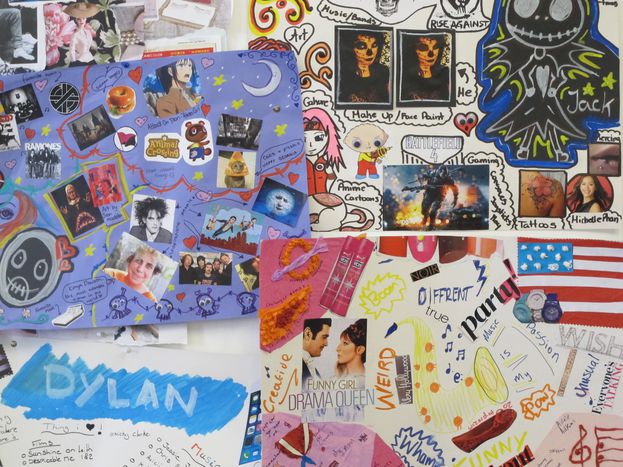
Edinburgh: Creativity To Succeed
Published on
Translation by:
Kait BolongaroKnown worldwide for the Fringe Festival that brings thousands of theatre shows every summer to the city, creativity lives far beyond the stage in Edinburgh. Art comes to hospitals, helps children overcome illness and transforms the lives of young people who, for various reasons, have not yet found their way.
Many of us have heard about the famous Fringe Festival, the event that brings hundreds of theatre companies from around the world to Edinburgh each August. But is there art beyond the Fringe? I arrived in Edinburgh to discover how art and creativity moves in the lives of Scots, what happens during the other months, if the Fringe is just a taste of what happens in the capital throughout the year or, on the contrary, if the festival is a cultural exception. What I did not expect to find in the end is what I discovered. For many people in Scotland, creativity is more than culture: it is a way of life, or rather, the reason why many continue living.
Art in the Hospital
I meet Sheena McGregor, a therapist, at the Caledonia ward at the Yorkhill Children's Hospital in Glasgow, about two hours by train from Edinburgh. Sheena has been dedicated to art therapy for 15 years, a discipline that began more than 50 years ago, after World War II in Britain. As she recounts, the specialists began doing art therapy in prisons and hospitals with patients suffering from tuberculosis or psychological problems.
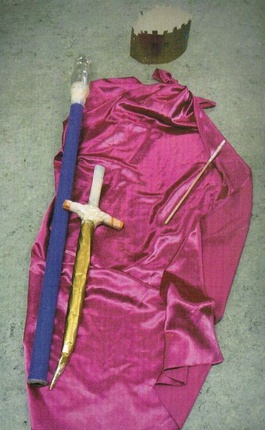 Sheena, who also works for an association called Creative Therapies, spends four days a week working with children with psychological problems, heart disease, eating disorders and emotional stress. "Children usually tell you they are fine, but in reality they are not; simply put, they cannot find the words to express what they feel," she says. In general, these are children who can not live a life like their classmates, which makes them feel different and somewhat weak. But, once you go through the doors of the Caledonia pavilion, this changes and with Sheena, they find their greatest strength: creativity. "They cannot play sports or many other things that children do, but they can make art and can be very creative and do wonderful things," says Sheena, as she shows me some of the work done by her patients over the past few years. "This is very personal, it is not something tangible or based on direct questions. It is based on how the child feels, how he or she breathes or how they enter the room, and mainly, is based on the relationship between us."
Sheena, who also works for an association called Creative Therapies, spends four days a week working with children with psychological problems, heart disease, eating disorders and emotional stress. "Children usually tell you they are fine, but in reality they are not; simply put, they cannot find the words to express what they feel," she says. In general, these are children who can not live a life like their classmates, which makes them feel different and somewhat weak. But, once you go through the doors of the Caledonia pavilion, this changes and with Sheena, they find their greatest strength: creativity. "They cannot play sports or many other things that children do, but they can make art and can be very creative and do wonderful things," says Sheena, as she shows me some of the work done by her patients over the past few years. "This is very personal, it is not something tangible or based on direct questions. It is based on how the child feels, how he or she breathes or how they enter the room, and mainly, is based on the relationship between us."
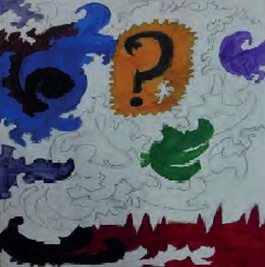 Although art therapy has a long tradition in the UK, the expert acknowledged that many parents are sceptical of the treatment, which has changed over time, however. "The nurses told me that my son was going through an episode of 'existential fear', but now it seems that the treament is helping him to go and play, do crafts with other children like him, it seems that he's blossomed," says the mother of a ten-year-old patient of Sheena's. "When I pick him up from school, he is always tired and cranky; but, when we come home from the hospital, he is transformed, more communicative, he turns off the radio and talks to me." Moreover, they are the same doctors who recommend that parents take their children to art therapy during treatment to "see the difference; they see that the children are more confident, less depressed. They are reinvigorated and more closely resemble normal children," adds the therapist. "The problem with medicine is that it objectifies children. With art therapy, children stop feeling like a 'heart problem' to feel like human beings, creative beings."
Although art therapy has a long tradition in the UK, the expert acknowledged that many parents are sceptical of the treatment, which has changed over time, however. "The nurses told me that my son was going through an episode of 'existential fear', but now it seems that the treament is helping him to go and play, do crafts with other children like him, it seems that he's blossomed," says the mother of a ten-year-old patient of Sheena's. "When I pick him up from school, he is always tired and cranky; but, when we come home from the hospital, he is transformed, more communicative, he turns off the radio and talks to me." Moreover, they are the same doctors who recommend that parents take their children to art therapy during treatment to "see the difference; they see that the children are more confident, less depressed. They are reinvigorated and more closely resemble normal children," adds the therapist. "The problem with medicine is that it objectifies children. With art therapy, children stop feeling like a 'heart problem' to feel like human beings, creative beings."
Creating the path
Beyond therapy in the strictly clinical sense, there are also programmes that combine art and creativity with social work and psychology in Edinburgh. At The Printworks, in the east of the city, Impact Arts has two decades of experience promoting social and labour reintegration of adolescents through the Creative Pathways project. It's noon and the headquarters of the organisation is an open space and quite messy. There are traces of creations everywhere: sketches, models, wooden planks, pieces of clothing and crayons. Every four months, 30 kids between 16 and 19 years-old participate in training programmes for the performing arts: acting and playwriting, designing costumes and sets.
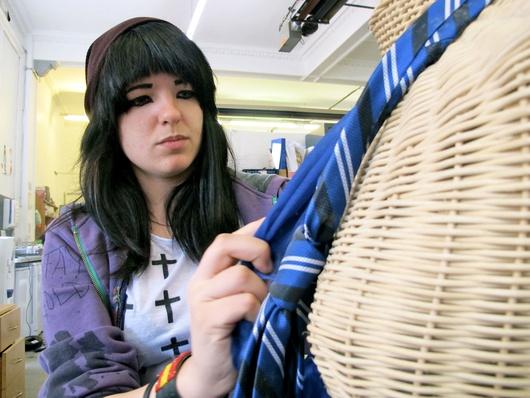 While displaying a large portfolio, Sarah Wallace, coordinator of the centre's opportunities, she explains how the organisation works. "Creative Pathways began as a way to maintain culture and provide an opportunity for young people to get a job." As Sarah explains, age is the only requirement to access the programme, although "the vast majority come from different organisms such as child advocates and social workers, as many have not been accepted in colleges or have not completed their studies." Therefore, Creative Pathways goes beyond teaching the technical basics of theatrical production; it provides the necessary social tools to find new motivation that requires them to continue and to help them find a job and, in some cases, rebuild their lives. "We try to transform lives through art, which on a personal level can increase their confidence level and self-esteem. Art allows them to be themselves and grow," delves Simaica Carrasco, the playwriting and body language tutor.
While displaying a large portfolio, Sarah Wallace, coordinator of the centre's opportunities, she explains how the organisation works. "Creative Pathways began as a way to maintain culture and provide an opportunity for young people to get a job." As Sarah explains, age is the only requirement to access the programme, although "the vast majority come from different organisms such as child advocates and social workers, as many have not been accepted in colleges or have not completed their studies." Therefore, Creative Pathways goes beyond teaching the technical basics of theatrical production; it provides the necessary social tools to find new motivation that requires them to continue and to help them find a job and, in some cases, rebuild their lives. "We try to transform lives through art, which on a personal level can increase their confidence level and self-esteem. Art allows them to be themselves and grow," delves Simaica Carrasco, the playwriting and body language tutor.
Matti is one of her students. He has a timid air and, at first glance, seems to be slightly apart from the group. But, if you give him some space, he begins to feel more comfortable and becomes very talkative. "Most of us have a different kind of intelligence. We have another view of the world and it has not gone well for us in a conventional education setting. We are more creative people with other logical abilities." His summary is so extraordinarily clear, while ensuring that the course is helping him to "do things that awhile ago would have been impossible, like public speaking."
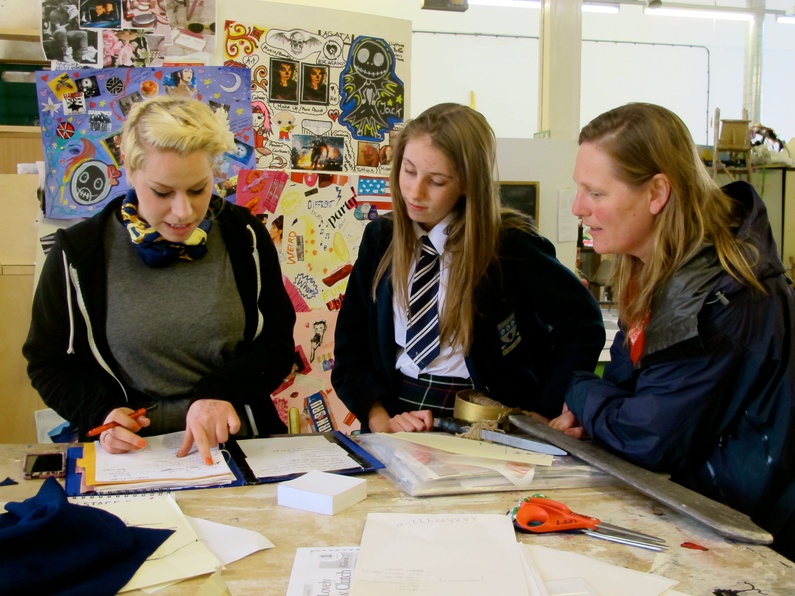 Before participating in the programme, some of these children were part of the NEET Scots, working in partnership with the organisation. This happened to Rihanna who, having attended Set Design course, is now an assistant professor. Rihanna, who left school at 15, spent more than three years without finding employment. "This work has really helped me improve my social skills. If you had tried to make me answer all these questions a year ago, I probably would have felt very embarrassed. But now, I really feel safer and I am able to encourage these people to continue learning and improving at what they do," she tells me, while still sawing a wooden board. A local theatre company has ordered eight stair risers is due in two days; time is short and there is a lot to do. Fortunately, these guys are not lacking the desire or motivation.
Before participating in the programme, some of these children were part of the NEET Scots, working in partnership with the organisation. This happened to Rihanna who, having attended Set Design course, is now an assistant professor. Rihanna, who left school at 15, spent more than three years without finding employment. "This work has really helped me improve my social skills. If you had tried to make me answer all these questions a year ago, I probably would have felt very embarrassed. But now, I really feel safer and I am able to encourage these people to continue learning and improving at what they do," she tells me, while still sawing a wooden board. A local theatre company has ordered eight stair risers is due in two days; time is short and there is a lot to do. Fortunately, these guys are not lacking the desire or motivation.
This article is part of a special series dedicated to Edinburgh and carried out in the framework of AN EU project, intiated by cafebabel.com and supported by the European Parliament and the Hippocrène foundation. 
Translated from Edimburgo: creatividad para salir adelante



